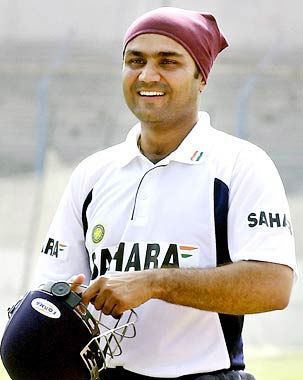
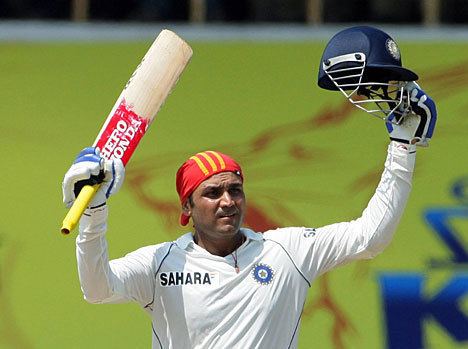
Virender Sehwag
Sehwag at a promotional event in January 2013. | |
| Personal information | |
|---|---|
| Full name | Virender Sehwag |
| Born | 20 October 1978 Najafgarh, Delhi, India |
| Nickname | Viru, Nawab of Najafgarh |
| Height | 5 ft 7 in (1.70 m) |
| Batting style | Right-handed |
| Bowling style | Right arm off break |
| Role | Opening batsman, occasional offspinner |
Early years
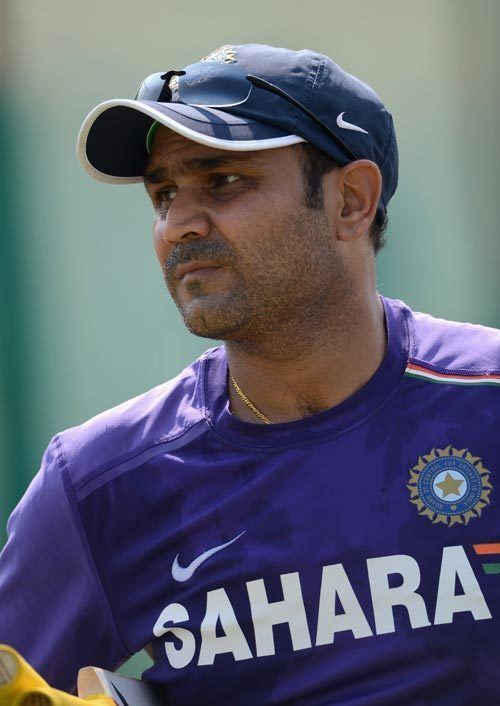
Cricketing career
ODI career
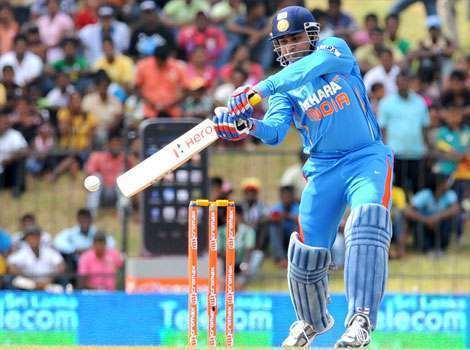
Sehwag was not given another match until the home series against Zimbabwe in December 2000. Sehwag rose to prominence in his fourth ODI match in March 2001 when he scored 58 off 54 balls, against Australia in Bangalore. Combined with his three wickets, he help earn India a victory and was awarded his first man of the match award. He followed this with an unproductive tour of Zimbabwe in mid-2001.
Sehwag had his international breakthrough in Sri Lanka in August 2001 when he was promoted to the opening slot for the tri-series also involving New Zealand. The promotion to open the innings came because regular opener Sachin Tendulkar was absent due to a foot injury. In the match against New Zealand that was to decide the finalist, he scored his maiden century from 69 balls. At the time, the century was the third fastest ODI century for an Indian behind Mohammad Azharuddins 62 ball effort and Yuvraj singhs 64 ball effort. This was his first score beyond 50 in ten matches and saw him named man of the match. This performance earned him a regular spot in the ODI squad in the middle-order. He bettered his own record by hitting a 60-ball century against New Zealand during the 2009 tour. An innings of note in 2002 was the 22 ball half-century against Kenya in Bloemfontein, tying the second fastest 50 by an Indian. Because of his attacking cricket stroke plays, Sehwag has got many fans, including the WestIndies legend Desmond Haynes, who admitted that he is a great fan of him.
With Gangulys injury in the India-England ODI Series in January 2002, Sehwag received another opportunity to open the innings which he seized by scoring 82 from 64 balls in Kanpur in an eight-wicket Indian victory. With good performances as opener, Sehwag was made a permanent fixture at the top of the innings. Sachin Tendulkar, who opened in the England ODI series, was moved to middle order– a strategy that reaped dividends for India in 2002 in ODI matches. In the England series and the preceding tour to South Africa, he compiled 426 runs at 42.6 with four half-centuries.
Virender Sehwag 82vs Australia | World Cup Final 2003
After modest returns on the tours of the West Indies and England in early and mid-2002, he scored 271 runs at 90.33 in the 2002 ICC Champions Trophy in Sri Lanka, with two man of the match performances. After running out Ian Blackwell, he was involved in a 192 run partnership with Ganguly, scoring 126 from 104 balls to help set up an eight wicket victory against England in a group match. He then scored 58 from 54 balls and took 3/25 including two wickets in the final over to help defeat South Africa by 10 runs to help India progress to the final.

In late 2002 he scored an unbeaten 114 from 82 balls that included a 196 run partnership with Ganguly to lead India to a nine wicket win over the West Indies in Rajkot.He was the only batsman to score a century in the 7 match New Zealand ODI Series where he made two centuries – 108 in Napier in an Indian defeat and 112 in Auckland in a one-wicket victory.
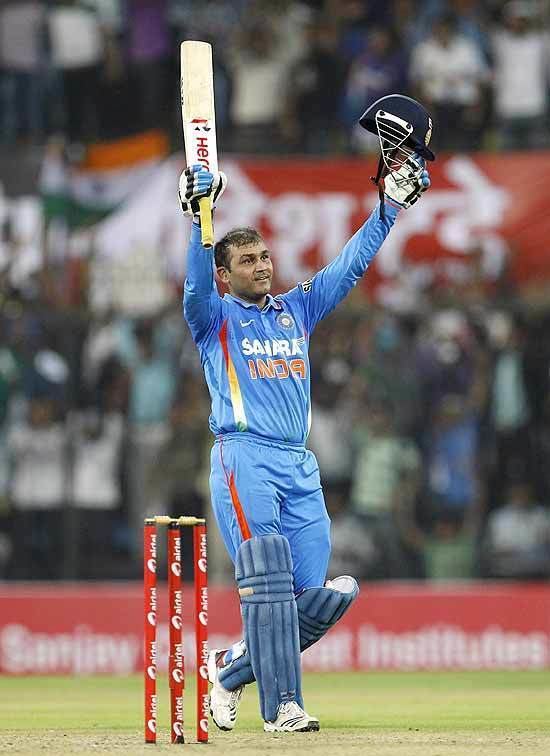
Virender Sehwag had a mediocre 2003 Cricket World Cup, scoring 299 runs at an average of 27, he top scored with 82 in the loss against Australia in the final.
Virender Sehwag 112vs New Zealand 6th ODI 2002/03 ODI
Test career
Virender Sehwag 112 vs New Zealand 6th ODI 2002/03 ODISehwags maiden century in mid-2001 in Sri Lanka was not enough to gain selection in the Test team for the corresponding series. Sehwag made his Test debut in late 2001 in the First Test against South Africa in Bloemfontein as a middle-order batsman. He scored 105 on debut despite the South African win. He was given a one match suspension by ICC match referee Mike Denness for overappealing in the Second Test in Port Elizabeth, which led to political dispute amongst the ICC and the two countries. He returned for the home series in 2001–02 against England and Zimbabwe. After scoring two half-centuries in the preceding series, he was promoted to a makeshift-opener on the 2002 England tour after the failure of previous openers and an experiment with wicket-keeper Deep Dasgupta. He scored 84 in the new role at Lords and then a century in the Second Test at Trent Bridge,and has batted there in Test matches ever since. He scored his maiden home-century of 147 in the First Test against the West Indies in the 2002–03 home season in Mumbai, which was at the time his top score in Test matches, earning him his first man of the match award. After a poor tour to New Zealand, he scored passed 50 for the first time in 9 innings when he scored 130 in a Test at Mohali against New Zealand in late 2003
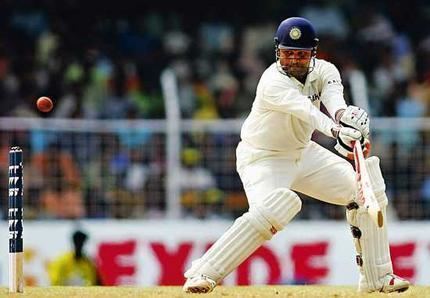
He then scored 195 against Australia on Boxing Day 2003 at the Melbourne Cricket Ground. His dismissal on the first afternoon led to an Indian collapse and eventual defeat.
Virender Sehwag 254 vs Pakistan 2006 1st test
In early 2004, he became the only Indian to score a triple century in Test cricket, with 309 against Pakistan in the First Test in Multan, beating V. V. S. Laxmans previous Indian record (281 against Australia) and helping India to a total of 5/675, the highest ever against Pakistan. It was Sehwags sixth Test century in 21 Tests. India went on to win by an innings, with Sehwag named man of the match.He also scored 90 in the Second Test defeat in Lahore and was named man of the series for his efforts after being the highest run scorer and average for the series.He later auctioned the bat with which he made the triple century, for Rs. 70,000, to aid in relief efforts for the tsunami victims of the 2004 Indian Ocean earthquake.
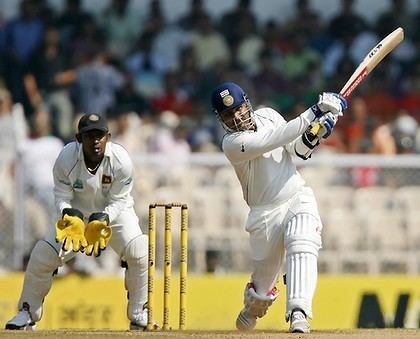
the 2005 home series against Pakistan, he scored 173 in Mohali, 81 in Kolkata and then 201 in Bangalore, totalling 544 runs at an average of 90.66 to win the man of the series award. He passed the 3000 run mark in Tests during the Bangalore Test, becoming the fastest Indian to reach the mark in terms of innings played. His performances over the preceding 12 months earned him selection in the ICC Test Team of the Year as well as nomination for Test player of the year.
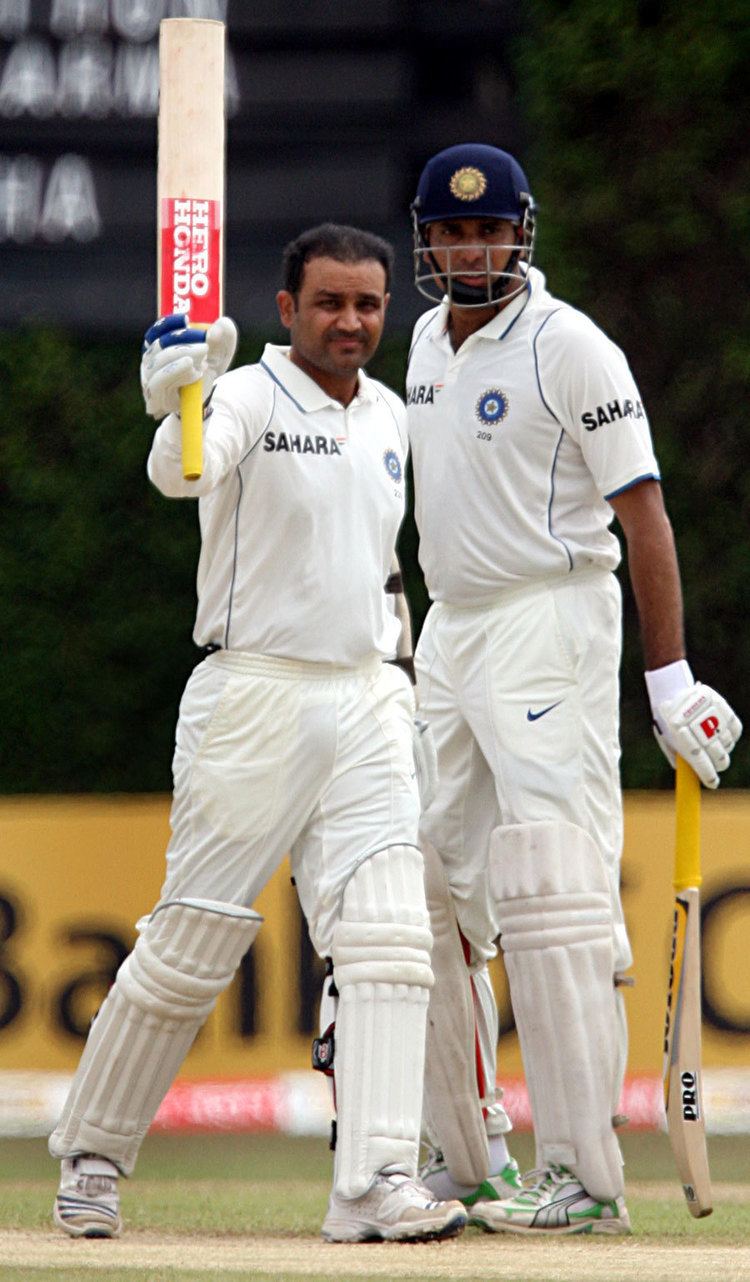
He earned selection for the ICC World XI which played Australia in the 2005 ICC Super Series, where he top scored in the first innings with 76. He attracted some criticism at the end of 2005, having failed to pass 50 in four Tests against Zimbabwe and Sri Lanka. He also missed the Second Test against Sri Lanka in Delhi due to illness, but returned to the team in the following match in Ahmedabad and captained the Indians to victory whilst Rahul Dravid was ill.
VirenderSehwag 309 vs Pakistan 2004, WORLD CLASS
During Sri Lankas tour of India in 2009, in the 3-match test series he finished with the highest run getter of the series with 491 runs. In the last test match, he made 293 with the help of which India won the test match. In this innings he established many records:
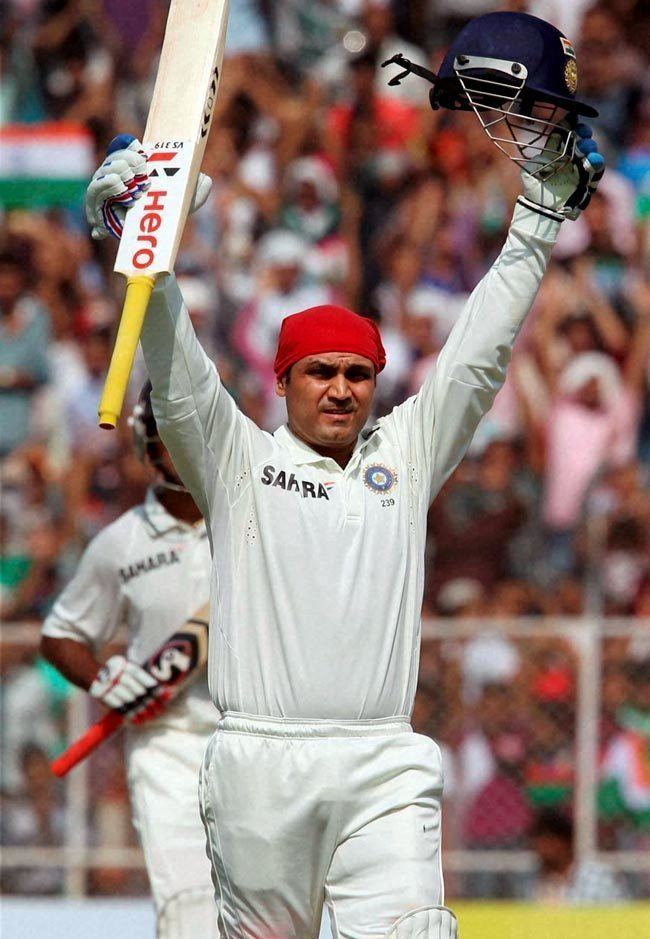
Scoring the second fastest 200.
Scoring the fastest 250 off just 207 balls.
Third highest run scorer on a single day. (284 n.o)
Virender Sehwag 155 vs Australia2nd test 2004
He missed accomplishing the feat of being the only player to score three triple centuries. He was caught and bowled by Murlitharan short by just seven runs. This innings, which consisted of 40 fours and 7 sixes, was described as his third best by him after his two triple centuries.
Indian Premier League
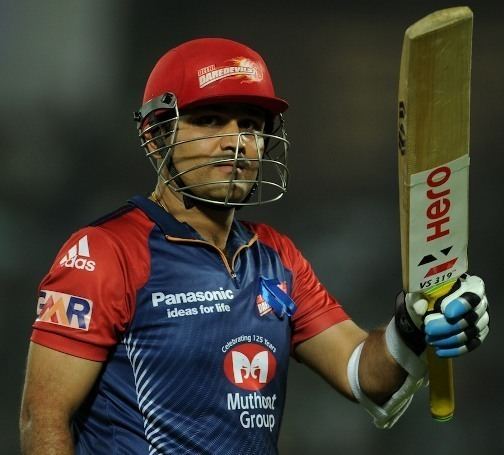
AwardsAchievements
• Arjuna Award (2002)
• Wisden Leading Cricketer in the World 2008, 2009
• ICC Test Player of the Year 2010
• Padma Shree 2010
Records
• Highest individual score in history in an ODI match 219 against West Indies on 8 December 2011 at Indore, surpassing previous record by Sachin Tendulkar (200)*.
• Fastest 250 in Test cricket in terms of balls faced (207).
• Fastest 300 in Test cricket in terms of balls faced (278).
• Most Test runs in a single day by an Indian. Sehwag made 257 in a day against SA in Chennai. He surpassed this in making 284 in a day against Sri Lanka. The latter was the second consecutive innings in which India scored more than 400 runs in a single day in Tests. Sehwag also made a century at faster than a run a ball on the previous occasion.
• Only Indian batsman to have scored two triple centuries in Test cricket. He is one of the four batsman in the history of Test cricket to score two triple centuries, alongside Australias Sir Donald Bradman, and the West Indies Brian Lara andChris Gayle.
• Second fastest century in ODI cricket by an Indian – 100 runs off 60 balls against New Zealand in 2009, after Virat Kohli - 100 runs off 52 balls against Australia in 2013.
• Second fastest ODI 50 by an Indian. – a record, he shares with Rahul Dravid, Kapil Dev and Yuvraj Singh – when he took 22 balls against Kenya in 2001
• Six double centuries – the first three of which came against Pakistan. Greg Chappell and Thilan Samaraweera are the other players to have scored multiple double centuries against Pakistan (2). Sehwag and Tendulkar are the only Indians to have made six Test double centuries.
• Highest score by an Indian batsman in Test cricket. He first achieved this when he scored 309 against Pakistan in Multan in 2004, and bettered his previous record in March 2008 at Chennai against South Africa by scoring 319.
• Fastest triple century: His second triple century scored at Chennai on 27–28 March 2008 against South Africa was the fastest in terms of balls faced by any batsman (off 278 balls).
• Consecutive 150+ scores in Test cricket: He holds the record for consecutive test hundreds converted to scores of 150+, at 11.
• He is one of the only five players to have scored more test hundreds than test fifties (15c/14f), along with Don Bradman(29c/13f), Mohammad Azharuddin (22c/21f), Matthew Hayden (30c/27f) and Kevin Pietersen(13c/11f) as on 7 August 2008
• Two consecutive double century partnerships in a Test innings. He achieved this record, for the first two wickets inChennai on 27–28 March 2008 (with Wasim Jaffer and Rahul Dravid respectively). This was the first time in Test history that the first two wickets in an innings have resulted in double-century stands. He equalled this in the innings against Sri Lanka in Mumbai, combining with Murali Vijay and Dravid for the first and second wickets.
• He is the first person in the history of test cricket to hit two triple centuries and take five wickets in a Test innings.
• He had launched the first five of Indias innings in 2011 World Cup by hitting the first ball for four. The suffering bowlers were Shafiul Islam, Jimmy Anderson, Boyd Rankin, Mudassar Bukhari and Dale Steyn.
.jpg)